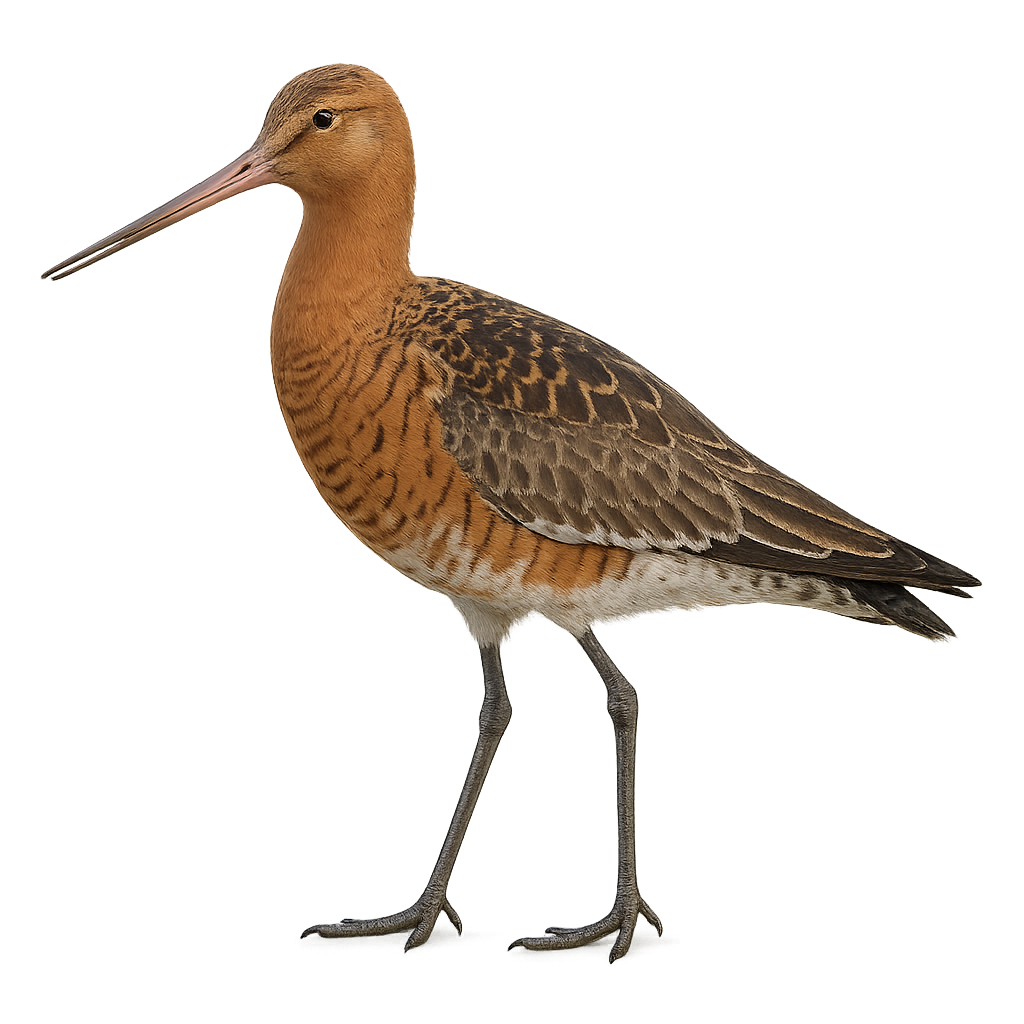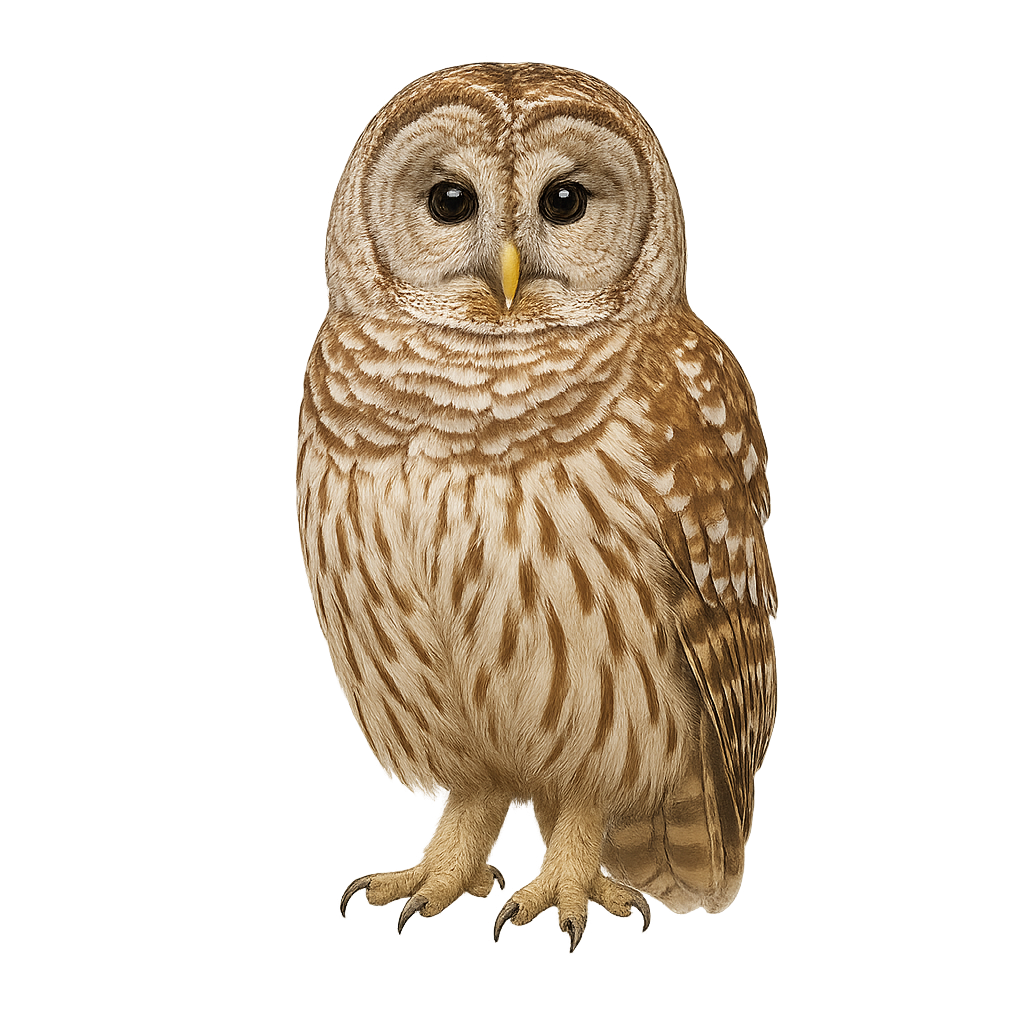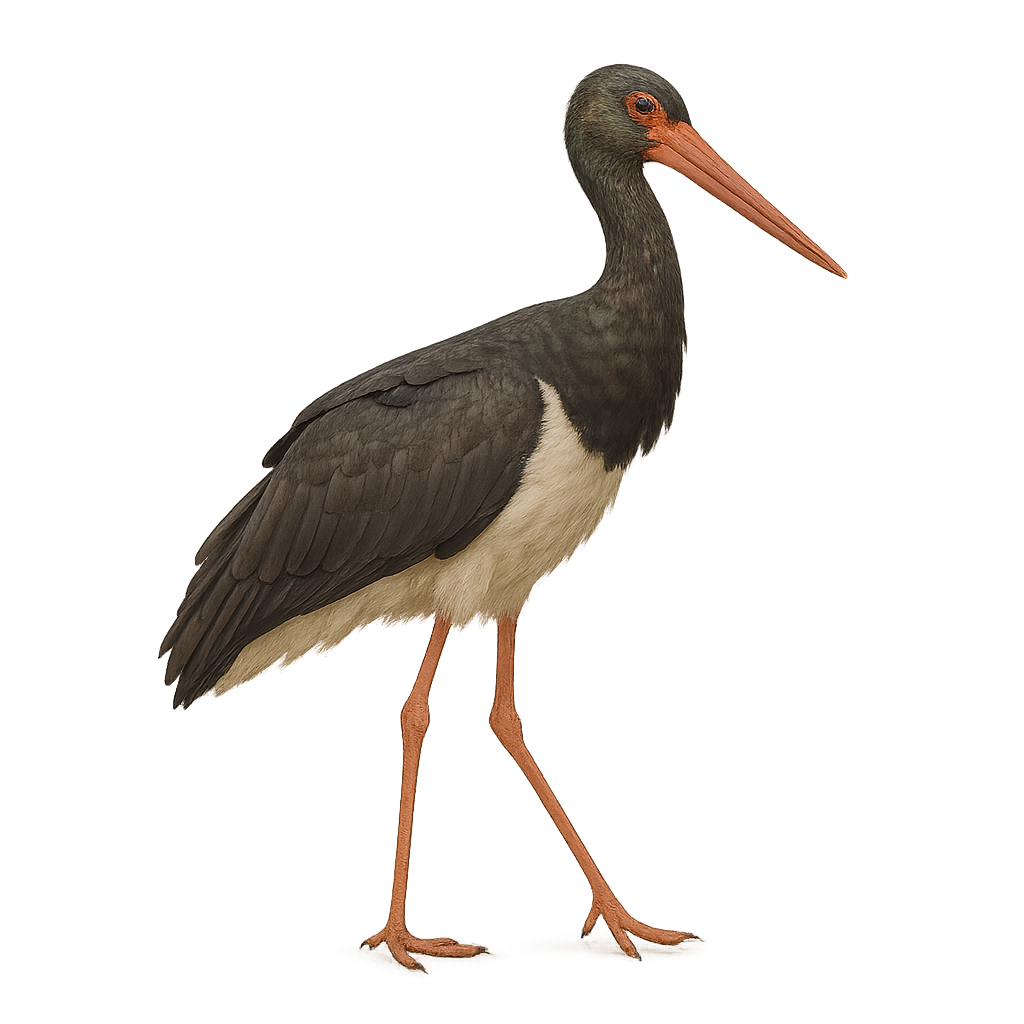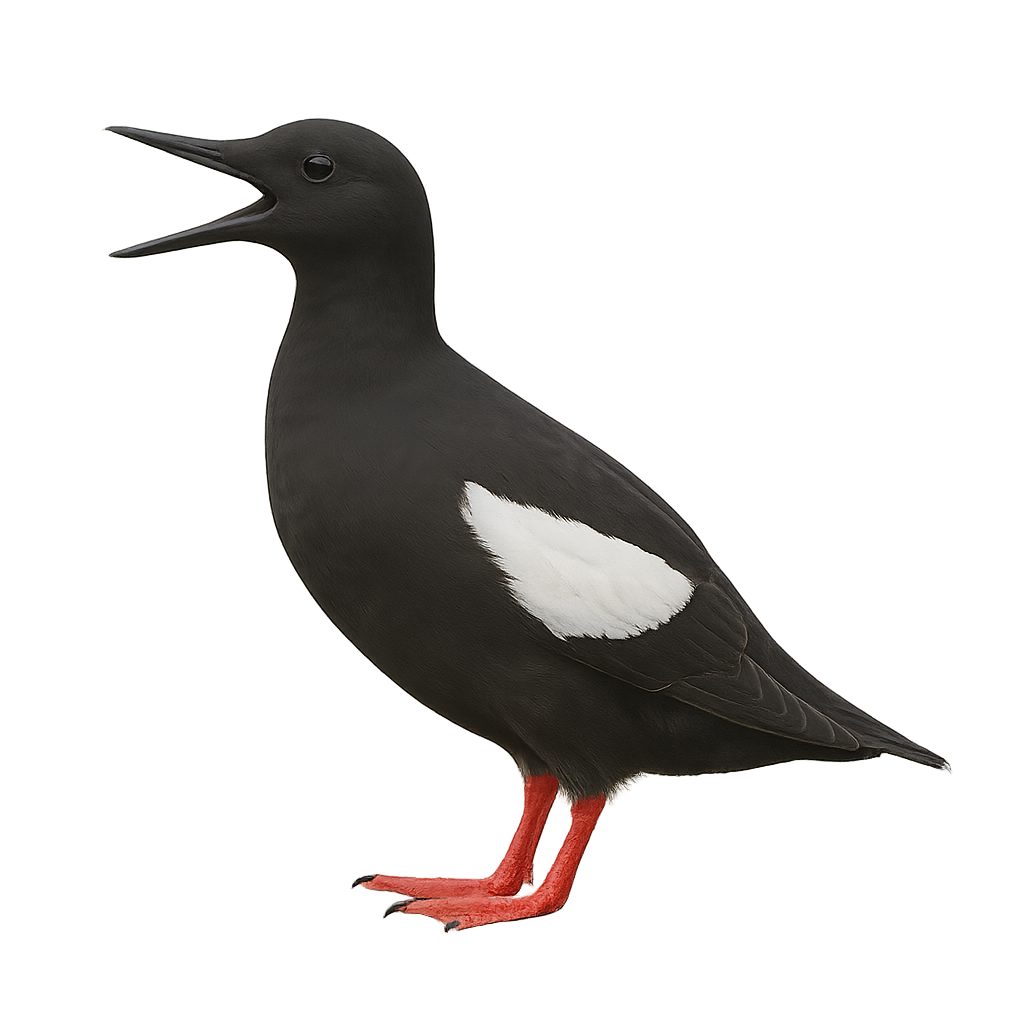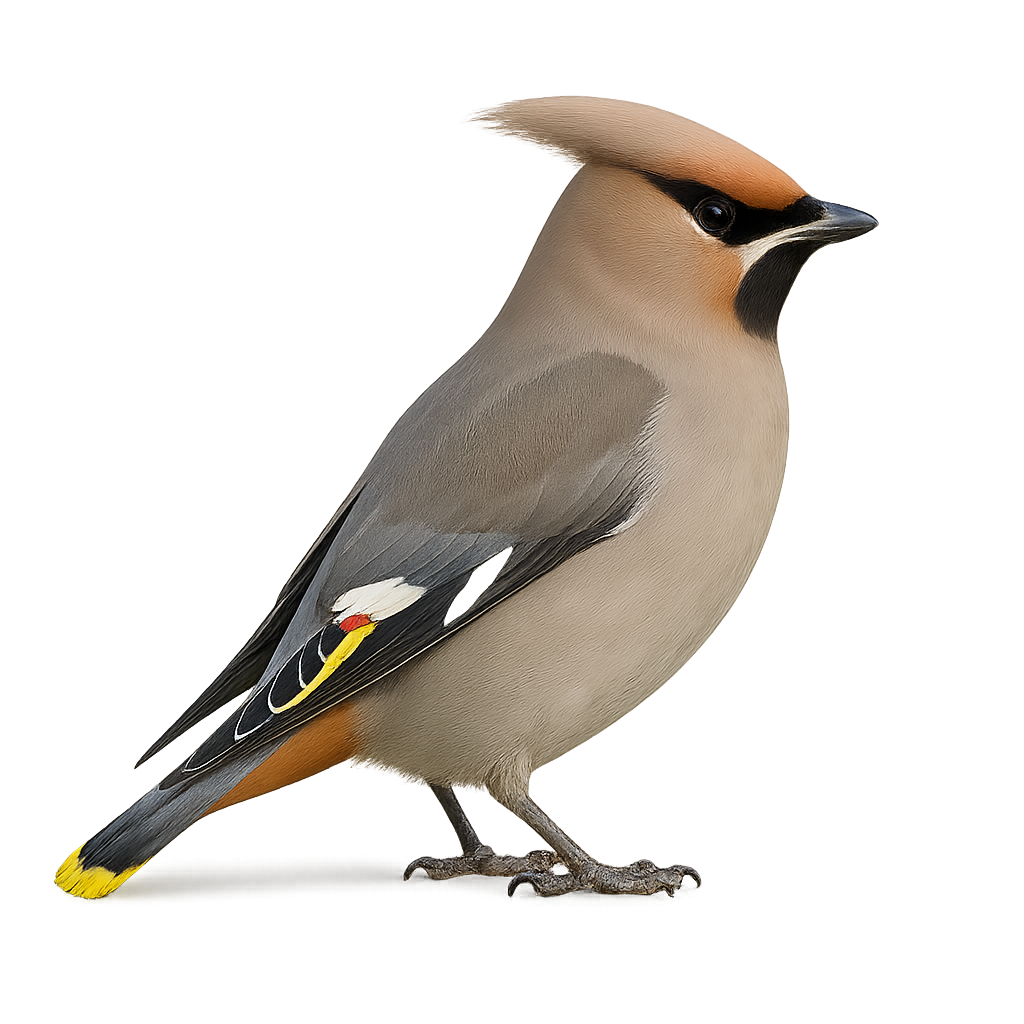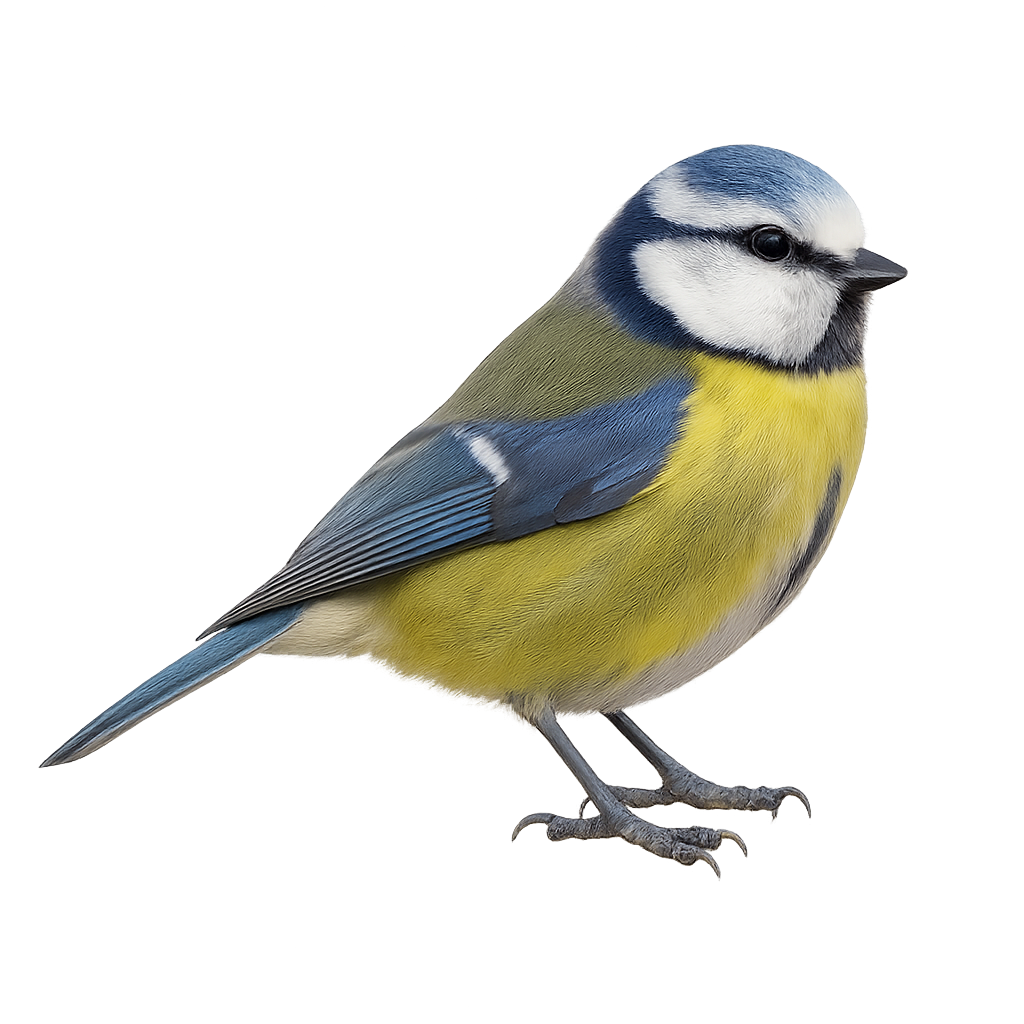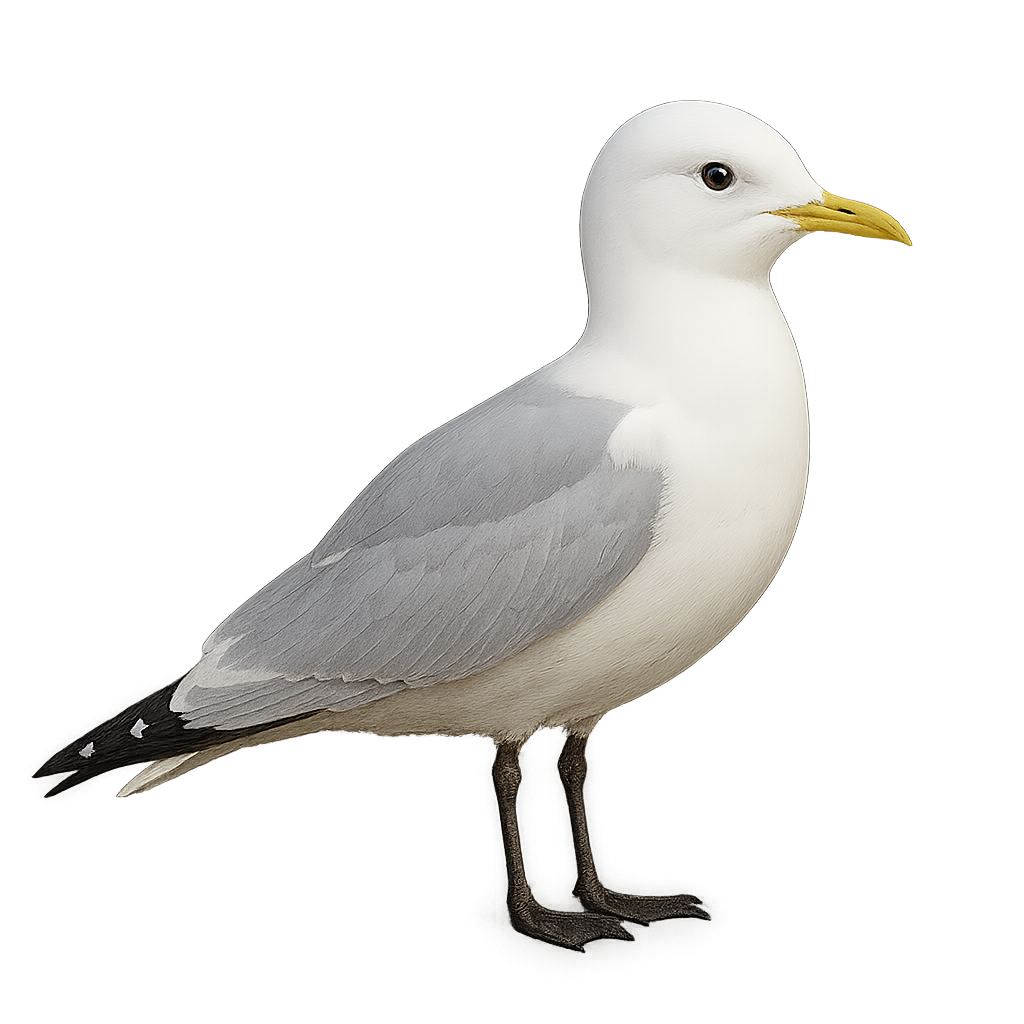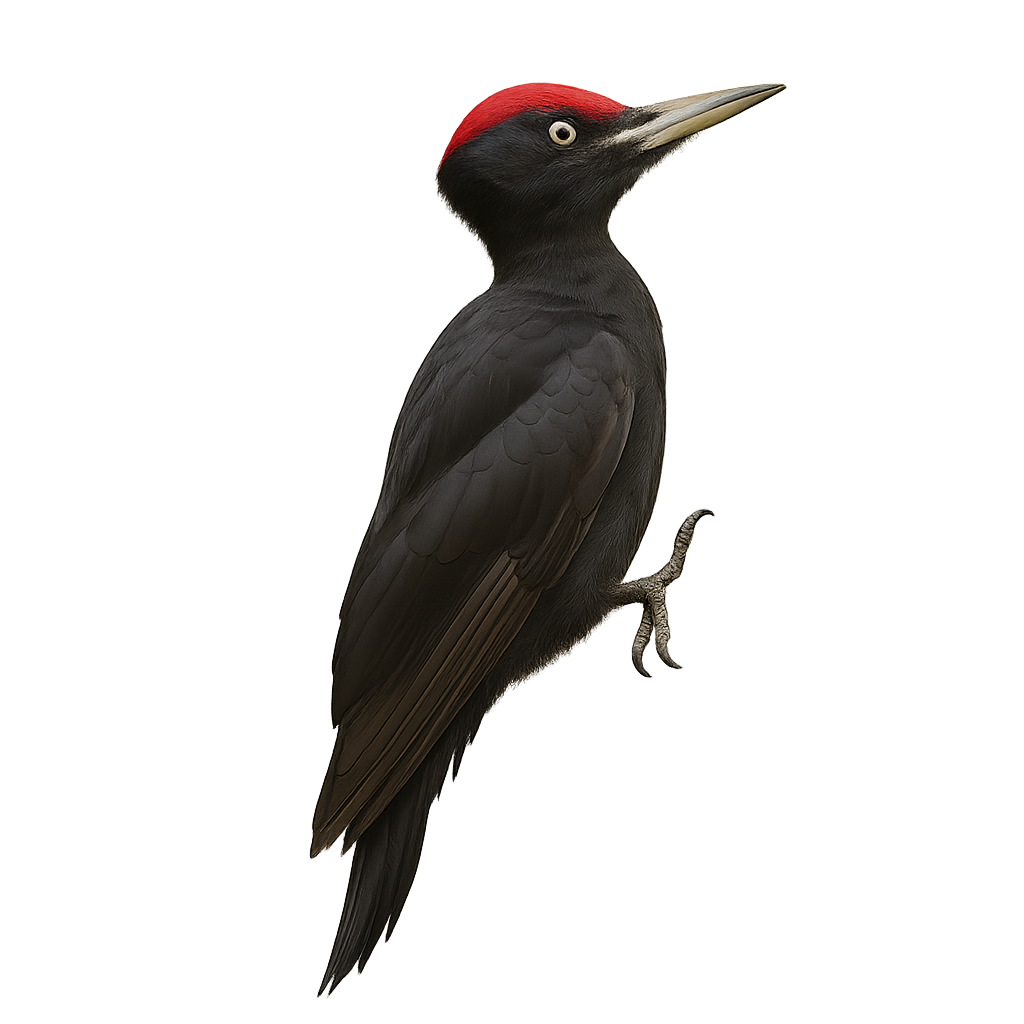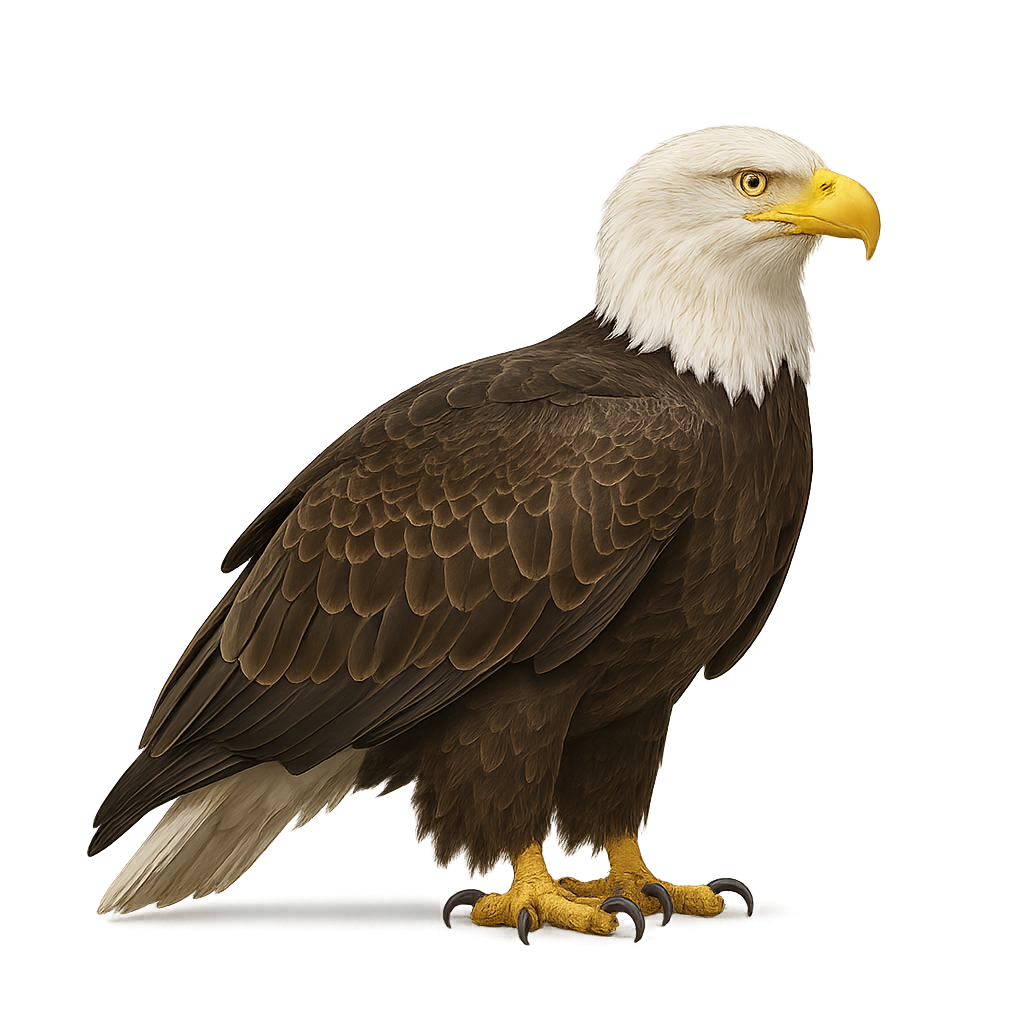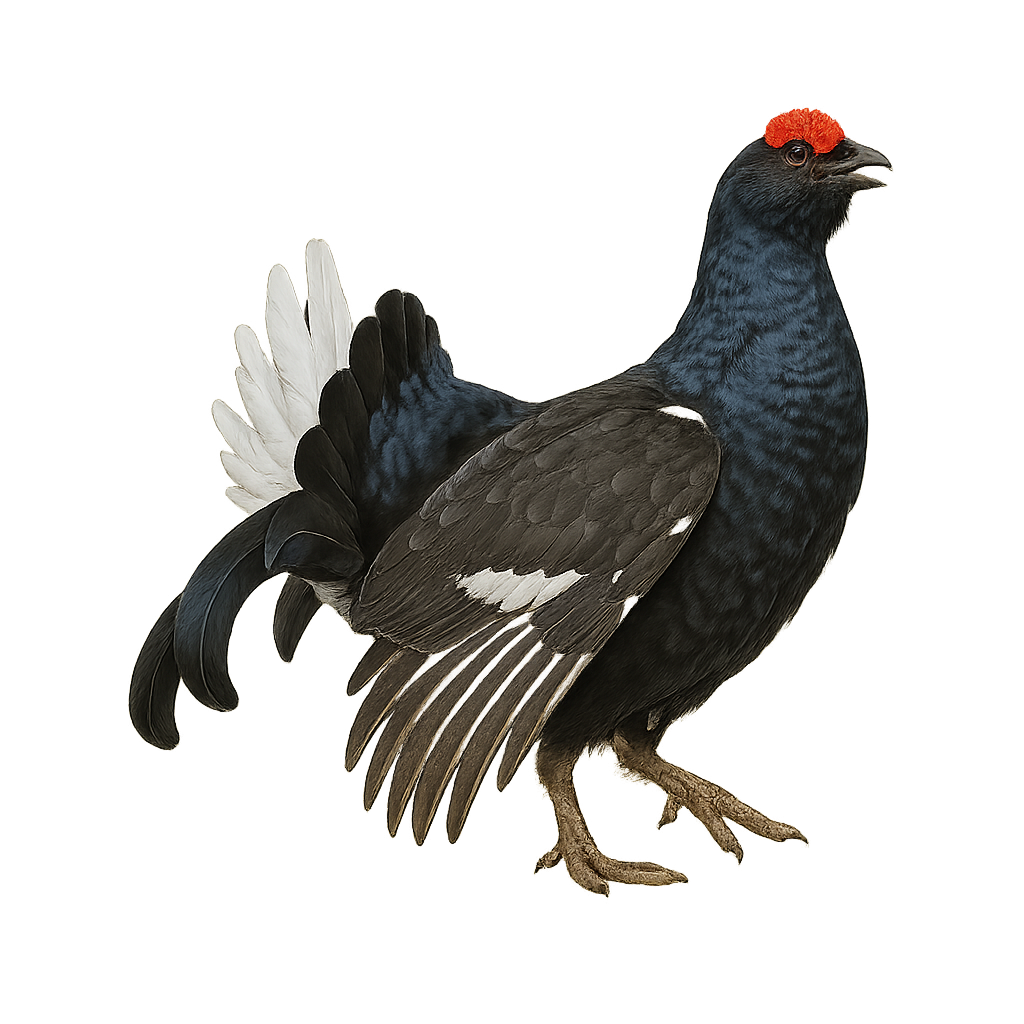The Booted Eagle is an elegant raptor, known for its narrow wings and ability to move quickly through the air. Found mainly in Europe, Asia, and the Middle East, this eagle is often seen hunting small mammals and birds in open landscapes such as meadows or fields. While it is smaller than other eagles, its agile flight and hunting technique make it an impressive bird.
During courtship displays, the Booted Eagle performs aerial acrobatics, where males dive in spirals before quickly climbing to attract the attention of females.
The Black-and-white Hawk-Eagle is an elegant forest raptor of tropical America, measuring between 51 and 61 cm in length with a wingspan of 110 to 135 cm. It is distinguished by its contrasting plumage: white head, neck, and underparts; black wings and back; and a tail barred with black and white. A small black crest adorns its head, and a black band crosses its yellow eyes. This predator inhabits humid tropical forests, forest edges, and open woodlands from southern Mexico to northern Argentina. It primarily hunts arboreal birds like toucans and parrots, but also preys on mammals, reptiles, and amphibians. Although listed as Least Concern by the IUCN, it is sensitive to deforestation and habitat fragmentation.
The Black-tailed Godwit is an elegant wader, easily recognizable by its long, slightly curved bill and long legs. It primarily inhabits wetlands and estuaries in Europe, Asia, and North Africa, where it feeds on aquatic invertebrates, worms, and insects, which it detects in the soft sediments along the shores. The Black-tailed Godwit is also known for its long migration, covering great distances between its breeding grounds in temperate regions and its wintering sites in warmer areas.
During the breeding season, males perform spectacular courtship displays, flying gracefully and emitting distinctive calls to attract females.
The Bar-tailed Godwit is a remarkable wader, easily recognized by its distinctive plumage, which varies from reddish-brown to gray and white, and its long, slightly downward-curved bill. It primarily inhabits coastal areas and wetlands in Europe and Asia, where it feeds on small marine invertebrates, mollusks, and insects, which it detects in the sediment. The Bar-tailed Godwit is a migratory bird, covering great distances between its breeding grounds in the Arctic regions and its wintering areas in more temperate zones.
During the breeding season, the Bar-tailed Godwit engages in particularly interesting nesting behavior, establishing nests on the ground in grasses or boggy areas.
The Black-crowned Night Heron is a medium-sized bird, easily recognized by its silver-gray plumage and piercing yellow eyes. It primarily inhabits marshes, estuaries, and lake shores in Europe, Asia, and North Africa. This nocturnal bird is an excellent fisherman, feeding on fish, crustaceans, and invertebrates, which it captures with its strong, pointed bill. Unlike many other aquatic birds, the Black-crowned Night Heron is primarily active at dusk, searching for food in the darkness.
The Black-crowned Night Heron is a social bird, forming colonies for breeding, but it prefers a quiet and hidden environment. While not directly threatened, it faces risks from water pollution and the destruction of its natural habitats.
The Barred Owl is a large nocturnal raptor, easily identifiable by its circular face forming a facial disc and its large yellow eyes. Its plumage is primarily gray-brown, marked with dark streaks on the head, back, and wings, from which it gets its name. This owl has a robust, stocky body, with broad wings and silent flight, perfectly suited to its nocturnal hunting in forests.
It primarily inhabits mixed and deciduous forests, especially in regions of North America. The Barred Owl hunts small mammals like rodents, birds, and occasionally insects, which it captures using its ability to fly silently. It is a solitary predator, hiding during the day in tree cavities or abandoned nests of other animals. While its population remains stable, the Barred Owl is vulnerable to disturbances in its natural habitat, such as deforestation and urbanization. It is protected in many regions to preserve its forest habitats.
The Black Stork is a large bird with dark, glossy plumage, characterized by its slender silhouette and long red legs and beak. Its plumage is primarily black, with a slight greenish tint and a metallic sheen on the wings and back. This migratory raptor is distinguished from its cousin, the White Stork, by its more discreet behavior and preference for wilder habitats. It primarily inhabits dense forests, wetlands, and mountainous areas of Eastern and Southeastern Europe and Asia.
The Black Stork primarily feeds on fish, amphibians, and small mammals, which it catches with its long beak while moving silently near rivers and lakes. Unlike the White Stork, it prefers isolated habitats, avoiding human areas. Its population has long been in decline due to deforestation, illegal hunting, and disturbance of its breeding habitats. However, conservation efforts have helped stabilize its populations in some regions.
The Black-winged Stilt is an elegant wader bird, easily recognized by its long, slender legs and bright white plumage. Measuring around 35 to 40 cm in length and with a wingspan of 70 to 80 cm, this bird is distinguished by its fine, straight black beak, which is slightly upturned. The Black-winged Stilt primarily inhabits wetlands, marshes, shallow rivers, and ponds across Europe, Asia, and North Africa. It mainly feeds on aquatic insects, crustaceans, and small fish, which it catches by walking in shallow water and probing with its beak. This wader is particularly known for its graceful way of moving on its long legs, often walking slowly in the water or performing elegant hops. During the breeding season, the Black-winged Stilt builds its nest on isolated islands or sandbanks, where females lay 3 to 4 eggs. The species is listed as of least concern, although it is vulnerable to habitat loss and water pollution.
The Barn Owl is a nocturnal bird of prey, easily recognizable by its heart-shaped face and large white wings. It typically measures between 33 and 40 cm in length, with a wingspan of 80 to 95 cm. Its plumage is mainly white with beige and brownish hues on its back, while its face, with its distinct shape, is a bright white, making it immediately identifiable. The Barn Owl primarily inhabits agricultural areas, open meadows, clear forests, and abandoned buildings or churches, where it finds places to nest. It primarily feeds on small mammals, such as mice and voles, but may also hunt birds or insects. Its hunting method is very silent, due to the unique structure of its feathers, which reduce flight noise. It is a solitary bird that usually hunts at night. While the Barn Owl is not currently endangered, it faces threats such as habitat loss, secondary poisoning from consuming contaminated prey, and collisions with vehicles.
The blackcap is a small passerine bird found primarily in forests, hedgerows, and gardens across Europe and Western Asia. It is easily recognized by its black head in the male (brown in the female) and its gray-olive plumage. This bird is an excellent singer, with a melodious song composed of trills and whistles. It feeds on small insects, berries, and seeds. Very discreet, it often goes unnoticed despite its frequent presence.
The Bluethroat is a small songbird, easily recognizable by its bright blue throat, bordered by a black band, forming a distinctive "mirror" pattern. It measures about 13 to 14 cm in length, with a wingspan of 22 to 25 cm, and weighs around 15 to 20 g. Its plumage is generally brownish on the back and light on the belly, with white and orange markings on the sides of its chest. The Bluethroat is primarily found in marshy areas, shrublands, and riverbanks in Europe and Central Asia, although some populations migrate to North Africa during the winter. It is especially known for its melodious song, which is often heard during the breeding season. The species primarily feeds on insects, worms, and small berries. While the Bluethroat is not endangered, it faces risks related to the loss of its natural habitat and changes in wetland areas.
The Black Guillemot is a medium-sized seabird, measuring between 32 and 38 cm in length with a wingspan of 49 to 58 cm. In breeding plumage, it has a black body with a large white wing patch, bright red feet, and a red interior to its bill. In winter, its plumage becomes paler, with a light grey back and head and white underparts. It inhabits rocky coasts of the North Atlantic and Arctic, nesting in crevices of cliffs or under rocks. Its diet mainly consists of fish, crustaceans, and mollusks, which it captures by diving up to 50 meters deep. Although listed as Least Concern by the IUCN, it is sensitive to marine pollution and predation by introduced species.

The Bearded Vulture is a large vulture, easily recognizable by its distinctive head, large wings, and brown and white plumage. It measures about 1.1 to 1.3 meters in length, with a wingspan of 2.6 to 2.8 meters, and weighs between 4.5 and 7.5 kg. Its head is covered with dark feathers, while its wings and back are mainly brown, with lighter feathers on its belly. The Bearded Vulture is unique among vultures for its feeding behavior, as it primarily feeds on bones. It is capable of breaking the hardest bones by dropping them from great heights to shatter them, allowing it to access the bone marrow. It primarily inhabits mountains, notably the Alps, the Pyrenees, and the Himalayas, where it also feeds on carcasses of dead animals, such as chamois or mouflons. Although the species was once endangered, conservation efforts have helped restore its population in certain areas. However, the Bearded Vulture remains vulnerable to human disturbance, habitat loss, and the decline of its natural prey.
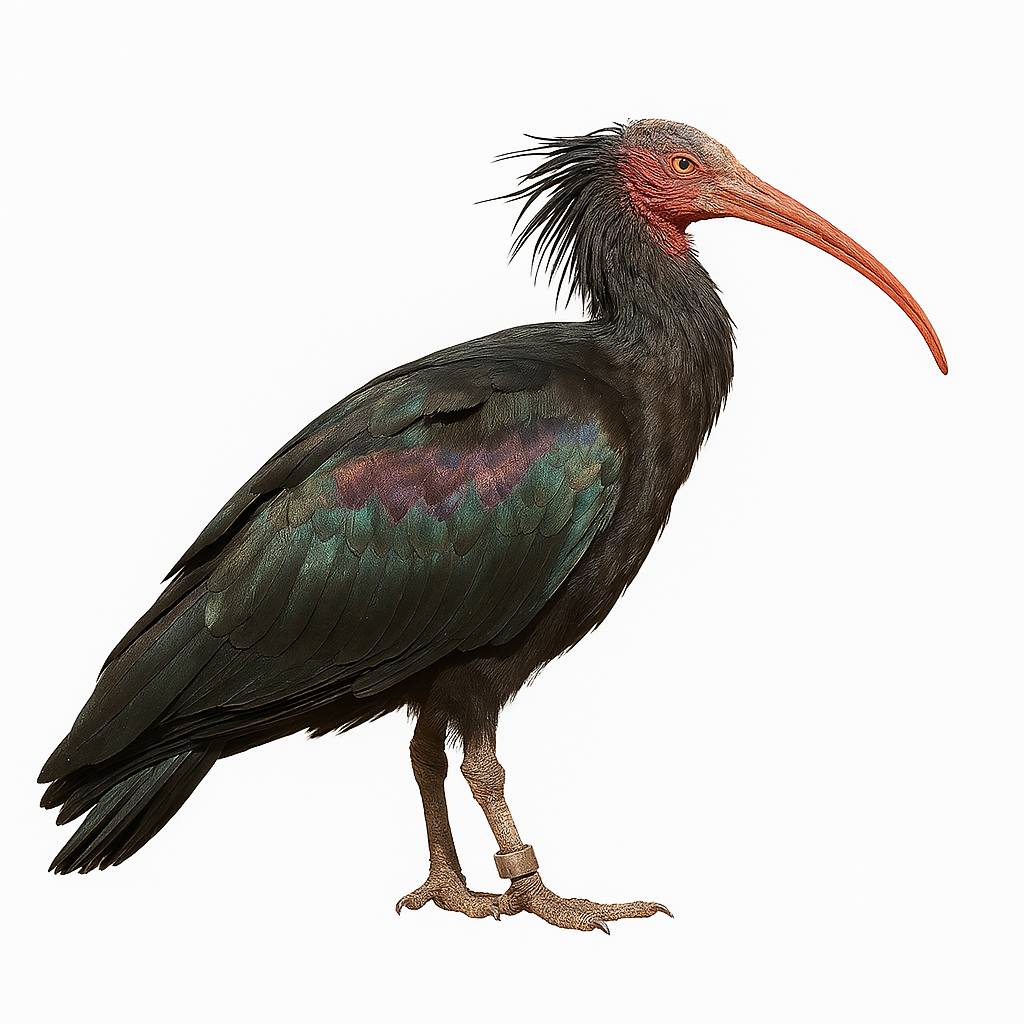
The Bald Ibis is a large migratory bird, easily recognizable by its dark plumage and bare head, adorned with a light down. It measures about 65 cm in length, with a wingspan of 1.3 to 1.4 meters, and weighs between 1.5 and 2.5 kg. Its plumage is brownish-red, with metallic green and purple hues that appear in the light. The head of the Bald Ibis is almost completely devoid of feathers, except for a small tuft of feathers on the top. It has a long curved beak, adapted for probing the ground in search of small invertebrates, worms, and seeds. The Bald Ibis primarily inhabits wetlands, marshes, and river valleys in the Middle East, North Africa, and parts of Europe. It is primarily herbivorous and insectivorous, feeding on aquatic plants and small animals found in marshy areas. The Bald Ibis is a migratory species, moving in groups during the breeding season and winter. While the species has been severely reduced in its range, conservation efforts have helped maintain small populations in certain areas. However, it remains vulnerable to habitat loss and human disturbance.
The Bohemian Waxwing is a small colorful bird, easily recognizable by its characteristic crest and the black edges of its feathers. It measures about 20 cm in length, with a wingspan of 30 to 35 cm, and weighs between 50 and 70 g. Its plumage is primarily light gray with bright yellow and red hues on its wings and tail, and it has red and yellow feathers decorating the tips of its plumage. The Bohemian Waxwing primarily inhabits the dense coniferous and deciduous forests of northern Europe and Asia, as well as North America. It is often found in groups, feeding primarily on berries, especially those from juniper and sea buckthorn trees, but it can also eat insects and seeds. This small passerine is also known for its soft call and social behavior, particularly during migration in groups. Although the species is not endangered, it is sensitive to climate change and the availability of its preferred food, berries.
The Belted Kingfisher is a medium-sized aquatic bird, easily recognized by its bright plumage and vivid colors. It measures about 28 cm in length and weighs between 100 and 150 g. Its back is a brilliant metallic blue, while its belly is white with orange patches on the chest. It has a long, straight, pointed bill, suited for catching fish and other aquatic prey. The Belted Kingfisher is an excellent diver, often perching on branches or electrical wires above the water before diving at high speed to catch its prey. It primarily lives in rivers, lakes, marshes, and coastal areas of North America, from southern Canada to Mexico. These birds are solitary and defend their territory by emitting sharp calls. While its population remains relatively stable, it is threatened by habitat loss due to water pollution and wetland destruction.
The Collared Kingfisher is a small colorful bird, measuring about 15 to 18 cm in length, and weighing between 20 and 30 g. It is distinguished by its head adorned with a characteristic crest made of bright blue feathers, and its brilliant plumage which combines shades of metallic blue and bright orange. Its back is cobalt blue and its belly is orange, with a striking contrast between the two. This kingfisher primarily inhabits wetlands in sub-Saharan Africa, often near rivers, marshes, and lakes, where it primarily hunts fish and aquatic insects. It is often seen diving from a perch to catch its prey, using its pointed and powerful bill to grab it with great precision. While it is generally a solitary bird, it can sometimes be seen in pairs during the breeding season. Although the population of the Collared Kingfisher is relatively stable, it faces threats such as habitat loss and water pollution.
The blue tit is a small, colorful bird easily recognizable by its blue head, olive back, and bright yellow breast. It is found primarily in forests, gardens, and parks across Europe and Asia. The blue tit is a curious and active bird, often seen foraging for seeds, berries, and insects. It is also capable of using ingenious techniques to access food, making it a fascinating subject for photographers.
The Black Kite is a large bird of prey, measuring about 55 to 60 cm in length, with a wingspan of 150 to 160 cm and weighing between 800 g and 1.5 kg. It is distinguished by its predominantly black plumage with gray and brown shades, and a lighter head, often silvery-gray. This raptor has long, pointed wings, ideal for soaring and maneuvering in the air. The Black Kite is primarily found in Europe, but its range also extends to North Africa and the Middle East. It primarily inhabits open areas such as countryside, sparse forests, and riverbanks, where it feeds on small mammals, birds, reptiles, and also carrion. The Black Kite is an excellent glider, using thermal currents to stay aloft with minimal effort. This bird is also known for its social behavior and can be seen in groups, especially during migration. Although it is not in immediate danger, it faces threats such as habitat loss, poisoning, and collisions with power lines.
The Black-legged Kittiwake is a medium-sized gull, measuring about 40 to 45 cm in length, with a wingspan of 90 to 110 cm. It is easily recognizable by its white plumage with light gray wings and a black head during the breeding season. What particularly distinguishes this gull is the shape of its tail, which is deeply forked, hence its name "tridactyla." It primarily inhabits coastal regions of the North Atlantic, notably in rocky areas, cliffs, and subarctic islands. The Black-legged Kittiwake feeds mainly on fish, crustaceans, and marine insects. It is often seen flying over the water in search of food or resting on rocks. Although the population of this species is stable, it may be threatened by human disturbances, particularly the disruption of breeding colonies and marine pollution.
The Bearded Tit is a small passerine bird primarily found in marshy areas and reed beds of Europe and Asia. It measures about 15 to 20 cm in length and weighs between 15 and 20 g. What particularly distinguishes the Bearded Tit is its plumage in shades of brown and cream, with long black moustaches that give it its name. It is often observed in reed beds and wetlands, where it primarily feeds on seeds, insects, and arthropods. Although it is an excellent climber and stealthy thief, the Bearded Tit is unfortunately threatened by the destruction of its natural habitat and the reduction of reedbed areas. This species is currently listed as "near threatened" by the IUCN.
The Brown Pelican is a large seabird native to the American coasts, measuring between 100 and 137 cm in length with a wingspan of 200 to 228 cm. It is characterized by its brown-gray plumage, white head with a yellowish crown during the breeding season, and a long bill with an expandable throat pouch capable of holding up to 11 liters of water. This pelican is known for its dramatic fishing technique: diving from several meters high to catch fish, mainly sardines and anchovies. It inhabits coastal areas, estuaries, mangroves, and sandy beaches, nesting in colonies on islands or isolated areas. Although currently listed as Least Concern by the IUCN, the Brown Pelican experienced significant declines in the 20th century due to pesticide pollution, particularly DDT. Conservation efforts have led to population recoveries, but habitat degradation remains a concern.
The Barbary Partridge is a terrestrial bird native to the mountains of North Africa and Western Asia. It measures about 30 cm in height and weighs between 300 and 500 g. Its plumage is characterized by brown and gray tones, with a distinctive "V"-shaped pattern on the chest. The Barbary Partridge primarily inhabits rocky, dry mountain habitats, where it feeds on seeds, roots, berries, and small insects. It is an excellent runner and, although capable of flying, prefers to move by running through the underbrush. This species is threatened in some regions due to excessive hunting and habitat loss, and it is protected in several countries.
The Black Woodpecker is a large bird from the woodpecker family, primarily found in deciduous and mixed forests of Europe, Asia, and North Africa. It measures between 45 and 50 cm in length, with a wingspan of 60 to 70 cm, and weighs between 250 and 300 g. Its plumage is entirely black, except for its ivory-colored bill. In females, a red patch adorns the top of the head, while in males, the red patch extends from the top of the head down to the nape. The Black Woodpecker is an excellent climber and a skilled driller, primarily feeding on insect larvae, arthropods, and sometimes small mammals found under tree bark. It prefers mature, well-established forests, where it creates large holes in search of food. While its population remains relatively stable, the Black Woodpecker is sometimes threatened by deforestation and habitat loss.
The Bald Eagle is a large raptor primarily found in North America, near bodies of water such as lakes, rivers, and coastal areas. It measures about 70 to 90 cm in length, with a wingspan of 1.8 to 2.3 meters, and weighs between 3 and 6 kg. Its plumage is primarily dark brown with characteristic white head and tail. The Bald Eagle is an excellent hunter, primarily feeding on fish, small mammals, and birds, which it captures by diving or snatching its prey with powerful talons. Although its population once faced a significant decline and was threatened, particularly due to pollution and hunting, the Bald Eagle is now a protected species, and its population has greatly recovered.
The Western Capercaillie, or Lyre Grouse, is a large bird primarily found in the coniferous forests and wooded areas of Eastern and Northern Europe, notably in Scandinavia, Russia, and Poland. It typically measures about 40 to 50 cm in length and weighs between 500 and 800 g. Its plumage is mainly brown and black, with white markings and red hues on the chest. The Lyre Grouse is particularly famous for the spectacular courtship dance of the male, who spreads his feathers in a lyre shape to attract a female. It primarily inhabits dense forest habitats and feeds on berries, seeds, young shoots, and insects. While its population remains relatively stable in some areas, the Lyre Grouse is threatened by habitat loss, deforestation, and human disturbances.
The Black-headed Trogon is a colorful bird found primarily in the tropical and subtropical forests of Central and South America, notably in Mexico, Honduras, Costa Rica, and Panama. It typically measures about 25 to 30 cm in length and weighs between 90 and 120 g. Its plumage is especially vibrant, with a black head contrasting with a brightly colored body, primarily green and red. The Black-headed Trogon primarily feeds on fruits, berries, and small insects. It is often observed in dense forests, where it enjoys perching on tree branches. While its population remains relatively stable, it is sometimes threatened by deforestation and the loss of its natural habitat.





